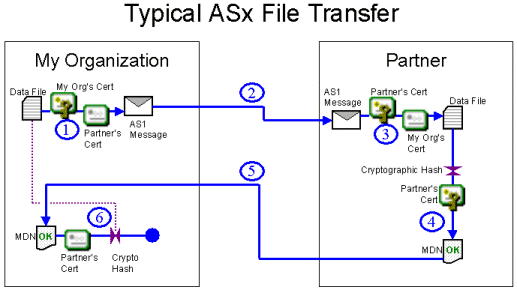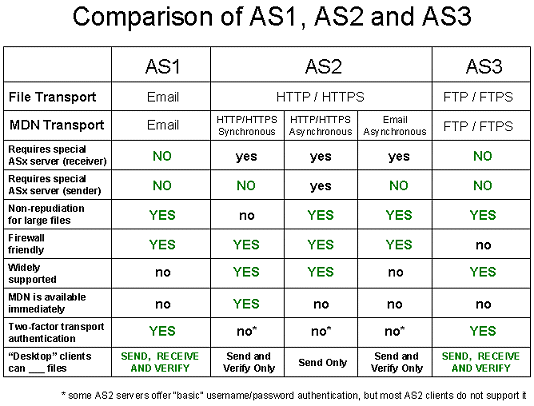
All of the ASx protocols can:
See also (on their respective "AS1, AS2 and AS3 - The ASx Protocol" pages):
In addition, all of the ASx protocols treat a single file as a single message. Unless you explicitly zip or otherwise bundle multiple files together before an ASx operation, each file will be sent individually and each will be paired up with its own MDN later.
The difference between the AS1, AS2 and AS3 protocols is really the different TRANSPORT protocol each one uses to send messages and receive MDNs.
The MDNs for AS2 transfers come in three varieties. In the synchronous HTTP(S) type, MDNs are transmitted using the same connection as the original file upload. In the asynchronous HTTP(S) type, MDNs are transmitted using a different web upload session. In the asynchronous email type, MDNs are transmitted via email, just as in AS1 MDN transmissions.
AS1 was developed first, followed by AS2 and AS3. AS2 did not completely detach itself from AS1 in one respect: asynchronous email MDNs. Remember that the file sender always controls how its MDN is returned from the recipient.
Some of the primary attributes, advantages and disadvantages of the three ASx protocols are summarized in the table below.

See also (on their respective "AS1, AS2 and AS3 - The ASx Protocol" pages):